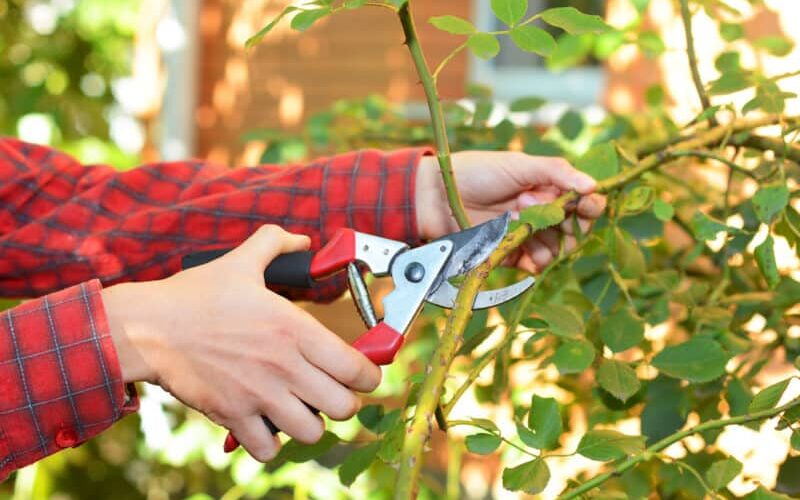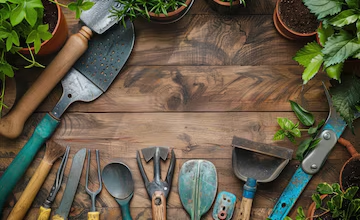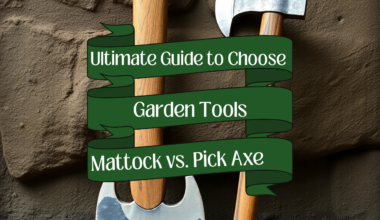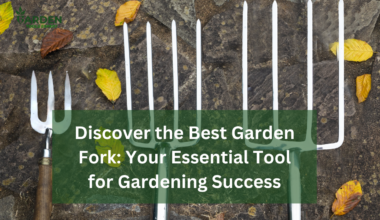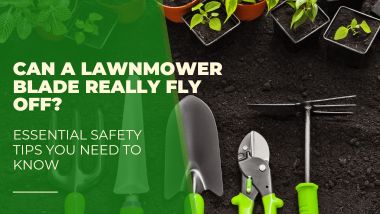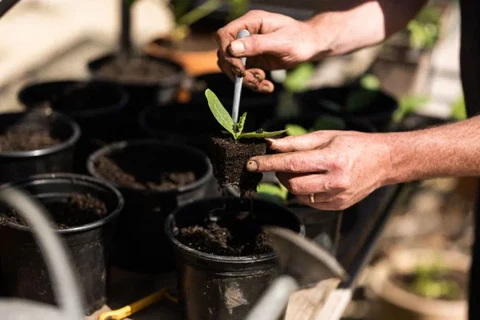
Table of Contents
Tools for plant propagation are every beginner gardener’s secret to multiplying plants without spending a fortune.
Whether you’re starting from seeds, taking cuttings, or experimenting with new varieties, the right tools can make the process smoother, more successful, and a lot more fun.
And the best part? You don’t need a big yard or fancy greenhouse; your balcony can be the perfect place to begin.
Imagine this: a few small trays filled with fresh soil on your balcony railing, tiny green shoots breaking through, and the thrill of knowing you grew them yourself.
For beginners, propagation might sound complicated, but with a handful of essential tools, you’ll find it surprisingly simple.
These tools not only help your plants grow stronger but also save space and reduce common beginner mistakes, like overwatering or poor lighting.
In this guide, we’ll explore seven brilliant tools designed to transform your balcony into a thriving mini garden. By the end, you’ll know exactly what you need to start propagating your own plants with confidence and enjoy the rewarding journey of watching them grow.
What is Plant Propagation (and Why It’s Perfect for Balcony Gardens)
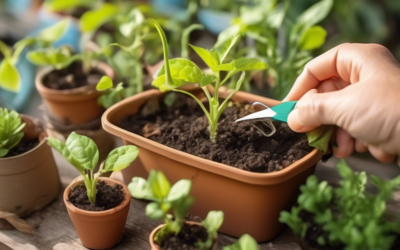
A Simple Explanation of Plant Propagation
Plant propagation is simply the process of creating new plants from existing ones. Instead of always buying new seedlings or fully grown plants, you can grow more from what you already have. There are several beginner-friendly methods:
- Seeds – starting plants from scratch in trays or small pots.
- Cuttings – snipping a healthy stem or leaf and encouraging it to grow roots.
- Divisions – splitting larger plants, like herbs, into smaller sections and replanting them.
Each method can feel like a little science experiment, and with the right tools for plant propagation, your chances of success increase dramatically.
Why Propagation Works for Balcony Gardens
For gardeners with limited space, propagation is a perfect match. It doesn’t require big garden beds, just a few containers, trays, or recycled pots on your balcony. This makes it:
- Affordable – one plant can turn into many, saving money over time.
- Space-saving – propagation trays or compact pots fit neatly on a balcony ledge or shelf.
- Rewarding – there’s something special about watching a cutting develop roots and grow into a thriving plant you nurtured yourself.
Propagation is also flexible; you can grow herbs, succulents, or vegetables without needing more than a few square feet.
By using essential tools for plant propagation, beginners can avoid common mistakes, like poor soil conditions or overwatering, and give their new plants the best possible start.
7 Brilliant Tools for Plant Propagation

When you’re starting a balcony garden, the right tools for plant propagation are the difference between struggling seedlings and thriving greenery.
Each tool plays a unique role in helping seeds sprout, cuttings root, and young plants grow strong even in small spaces. Let’s look at seven essentials every beginner balcony gardener should have.
1. Propagation Trays & Seedling Pots
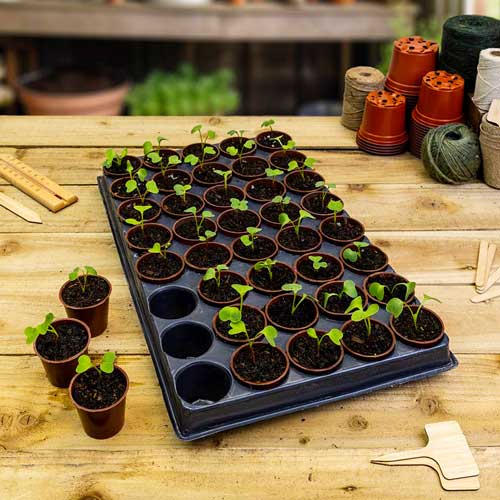
One of the most practical tools for plant propagation is a good set of trays or seedling pots. These containers keep your plants organized, save space, and create the perfect environment for early root development.
Pro Tip: Pick trays with drainage holes to prevent root rot and keep your balcony clean.
2. Seed Starting Mix
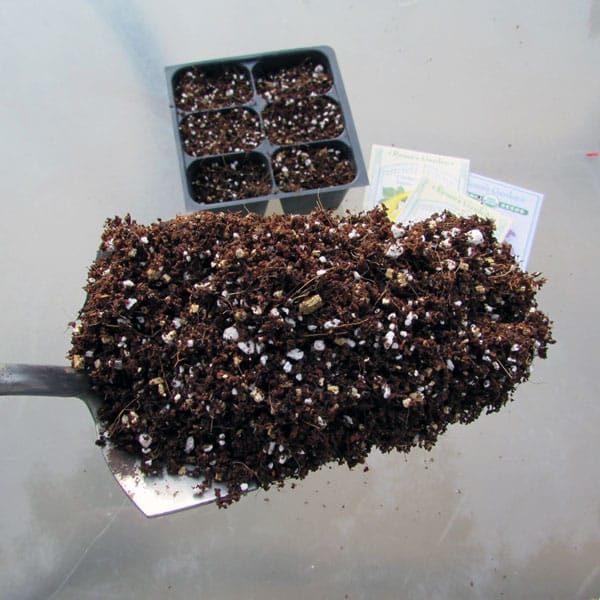
Another must-have among tools for plant propagation is a quality seed starting mix. Unlike heavy garden soil, this mix is light, airy, and designed to encourage healthy root growth in small containers.
Pro Tip: Try a peat-free blend with coco coir and perlite for eco-friendly balcony gardening.
3. Hand Pruners or Sharp Scissors

Clean cuts are essential for cuttings, which makes pruners or sharp scissors one of the most reliable tools for plant propagation. A smooth cut gives your plant the best chance to form strong new roots.
Pro Tip: Always disinfect your pruners before use to avoid spreading diseases.
4. Humidity Dome or Mini Greenhouse
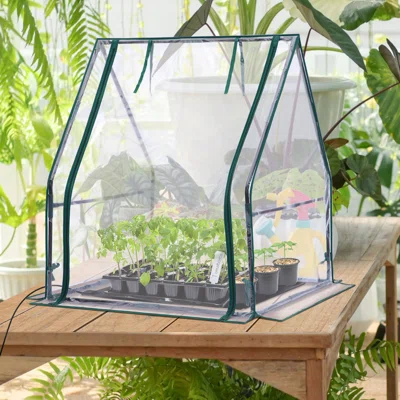
Balconies can get dry or windy, so a humidity dome is one of the smartest tools for plant propagation you can use. It locks in moisture, creating the mini greenhouse effect your seedlings need to thrive.
Pro Tip: Repurpose a clear plastic container as a DIY dome if you’re gardening on a budget.
5. Misting Bottle or Spray Tool
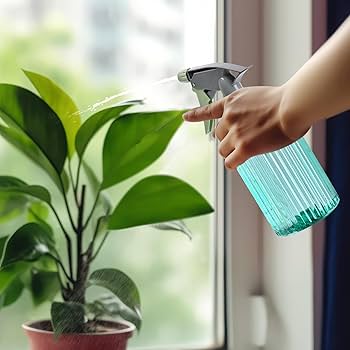
A misting bottle is a gentle but powerful tool for plant propagation. Instead of drowning fragile seedlings, misting delivers just the right amount of moisture to keep the soil damp without overwatering.
Pro Tip: Mist early in the day so leaves have time to dry before evening.
6. Rooting Hormone Powder or Gel
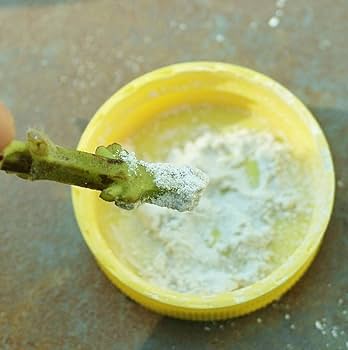
For beginners, rooting hormone is one of the most effective tools for plant propagation. It speeds up root development and increases the success rate of cuttings, especially for plants that are harder to root.
Pro Tip: Lightly dip the cut end into the powder or gel; using too much can actually harm the cutting.
7. Grow Lights (if sunlight is limited)
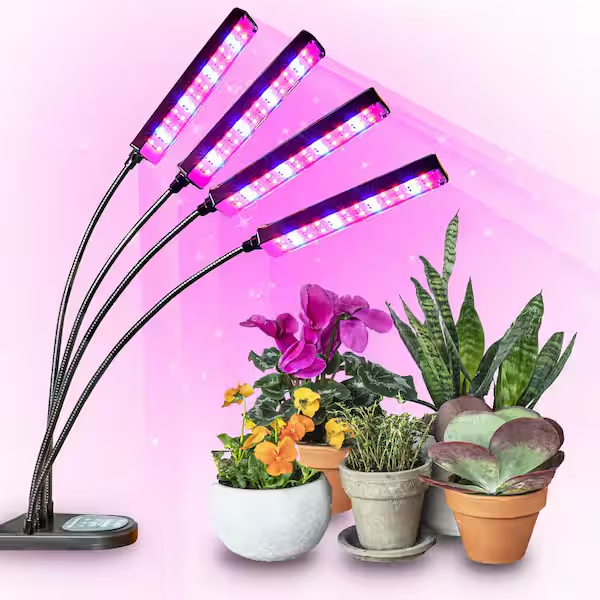
If your balcony doesn’t get enough natural light, grow lights are lifesaving tools for plant propagation. They ensure your seedlings get the energy they need to grow strong, regardless of the season.
Pro Tip: Choose energy-efficient LED grow lights that are safe and easy for beginners to use.
How to Use These Tools Step-by-Step (Mini Guide)
Step 1: Prepare trays with seed mix
Using the right tools for plant propagation begins with setting up your seed trays. Fill them with a lightweight seed-starting mix instead of heavy garden soil. This ensures proper aeration and drainage, giving your seeds or cuttings the best chance to sprout on your balcony.
Step 2: Take healthy cuttings using pruners
Clean, sharp tools for plant propagation, like pruners or scissors, are essential for success. Choose healthy stems from your parent plant and make a neat cut just below a node. A clean cut reduces stress on the plant and helps your new cutting root faster.
Step 3: Dip in rooting hormone
Among the most effective tools for plant propagation is rooting hormone, available in powder or gel form. Dipping your cuttings before planting increases the chances of successful root development, especially for beginners.
Step 4: Place in trays under a dome
Propagation trays paired with humidity domes are classic tools for plant propagation that create a greenhouse effect. This keeps cuttings warm and moist, which is perfect for a small balcony environment.
Step 5: Mist daily for moisture
Gentle misting bottles are underrated but vital tools for plant propagation. Mist your seedlings or cuttings daily to maintain humidity without drowning them in excess water.
Step 6: Use grow lights if needed
When sunlight is limited, grow lights become powerful tools for plant propagation. Place them a few inches above your trays to mimic natural sunlight and keep plants strong.
Step 7: Transplant to balcony pots when strong
The final step in using tools for plant propagation is transplanting. Once roots are established and seedlings look sturdy, move them carefully into larger balcony pots where they can thrive long-term.
Common Beginner Mistakes to Avoid
Even with the right tools for plant propagation, beginner balcony gardeners sometimes face challenges that slow down their progress. The good news? Most mistakes are easy to avoid once you know what to look out for.
1. Using Heavy Garden Soil
One of the most common errors is starting seedlings or cuttings in regular garden soil. While it might seem convenient, garden soil is often too dense, trapping water and suffocating delicate roots.
Instead, always use a lightweight seed-starting mix. Pairing your soil with proper propagation trays ensures roots can breathe and grow freely, an essential step for balcony gardeners working in limited space.
2. Overwatering Instead of Misting
Plants at the propagation stage are very sensitive to excess water. Beginners often drench their soil, leading to rot and mold.
A better approach is to use a spray bottle or misting tool. This keeps the soil moist without overwhelming fragile roots. It’s a small adjustment that makes a big difference in success rates.
3. Skipping Labeling
It’s easy to get excited and forget which seeds or cuttings you placed in each container. Without labels, you may mix up plants and miss key care requirements.
Simple plant markers or even recycled popsicle sticks solve this problem and keep your balcony propagation project organized.
4. Giving Up Too Early
Propagation takes time. Many beginners expect instant results and abandon their efforts too quickly. Remember, even with the right tools, patience is key. Keep monitoring your seedlings, adjust light or humidity when needed, and give your plants the chance to thrive.
Balcony Gardener Pro Tips
Once you’ve mastered the basics and gathered the right tools for plant propagation, you can take your balcony gardening to the next level with a few smart tricks. These pro tips will help you maximize space, save money, and create the perfect environment for your plants to thrive.
1. Use Vertical Space Wisely
Balconies can feel small, but they’re full of hidden potential. Invest in vertical racks, wall planters, or hanging shelves to stack your propagation trays and pots upward instead of outward. This keeps your balcony organized while allowing you to grow more in limited square footage.
2. Recycle Everyday Items
You don’t always need fancy equipment. Yogurt cups, egg cartons, and plastic bottles can be repurposed into seedling starters. Combined with essential tools for plant propagation like a misting bottle or humidity dome, these DIY solutions work just as well as store-bought options.
3. Choose Easy-to-Propagate Plants First
Not all plants are beginner-friendly. Herbs like basil, mint, and parsley, or succulents such as jade and aloe, are excellent starting points. They root quickly and give you early success, boosting your confidence to try more challenging varieties later.
4. Optimize Light and Airflow
Even with grow lights, plants need proper airflow to avoid mold. Keep your propagation trays near a window with indirect light or add a small fan to improve circulation.
This helps seedlings stay strong and healthy in balcony conditions.
With these practical tips, your balcony garden will not only save space but also feel more productive and rewarding, proving that propagation success is possible even in the smallest of spaces.
Conclusion: Your Balcony Garden Transformation Starts Here
Starting a garden on your balcony may feel overwhelming at first, but with the right tools for plant propagation, you’ve already set yourself up for success.
From trays and misting bottles to grow lights and labeling tools, each item plays a small yet powerful role in helping tiny seeds and cuttings grow into thriving plants. More than just tools, they’re stepping stones toward creating a green space you can be proud of right outside your door.
Remember, propagation is a journey. Some days you’ll see quick progress, while other times patience is your best friend. But every leaf that sprouts is proof that your effort, consistency, and smart tool choices are paying off.
And the best part? You don’t need a big backyard; your balcony is more than enough to nurture life.
Now I’d love to hear from you: Which of these tools do you already use, and which one are you most excited to try next?
Drop your thoughts in the comments’d be thrilled to hear your propagation stories! And if you found this guide helpful, share it with a fellow plant lover who’s dreaming of starting their own balcony garden. Together, we can inspire more people to grow.

